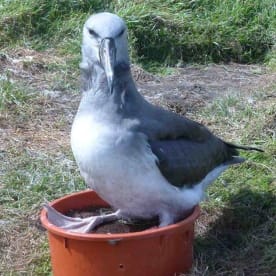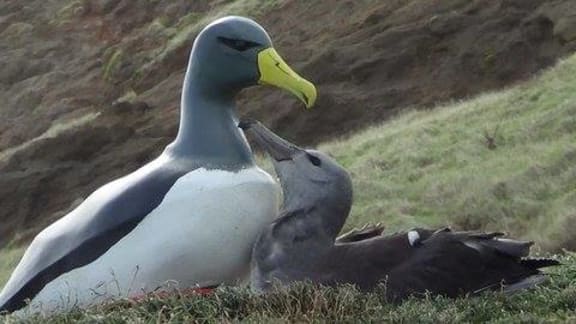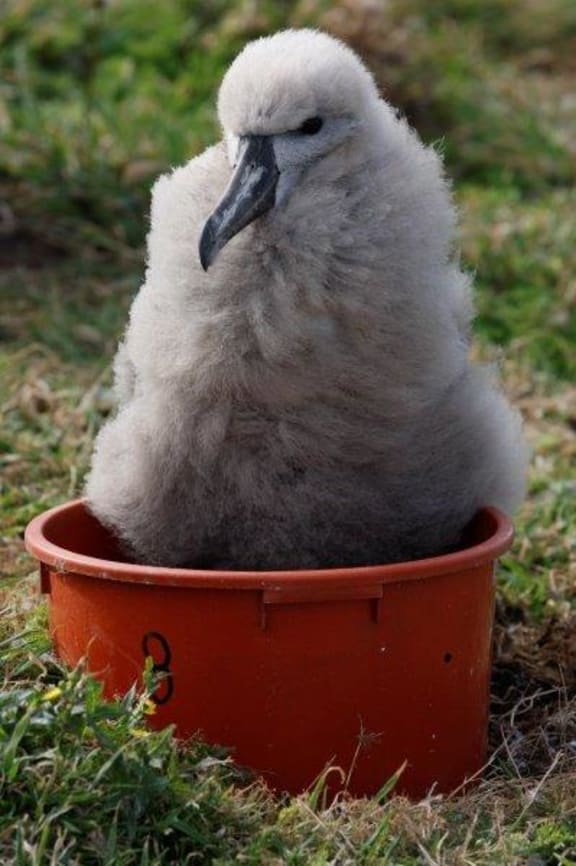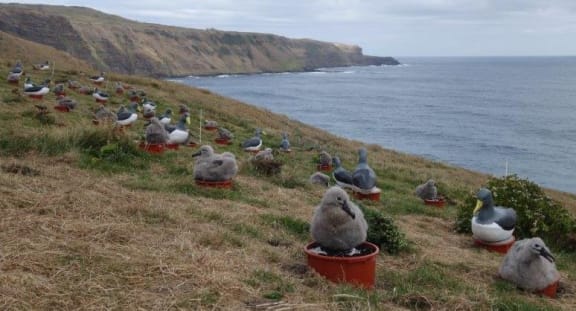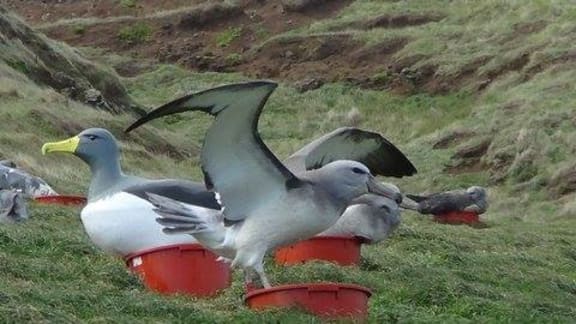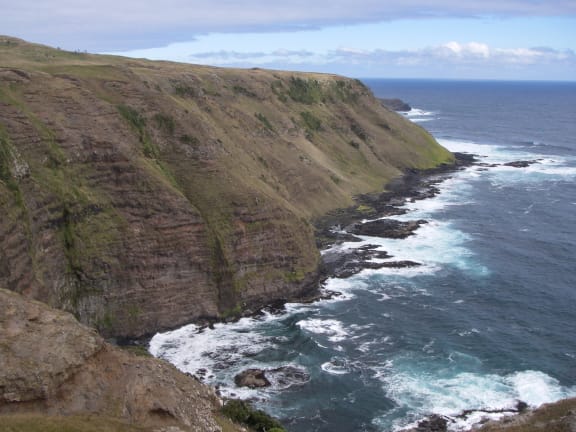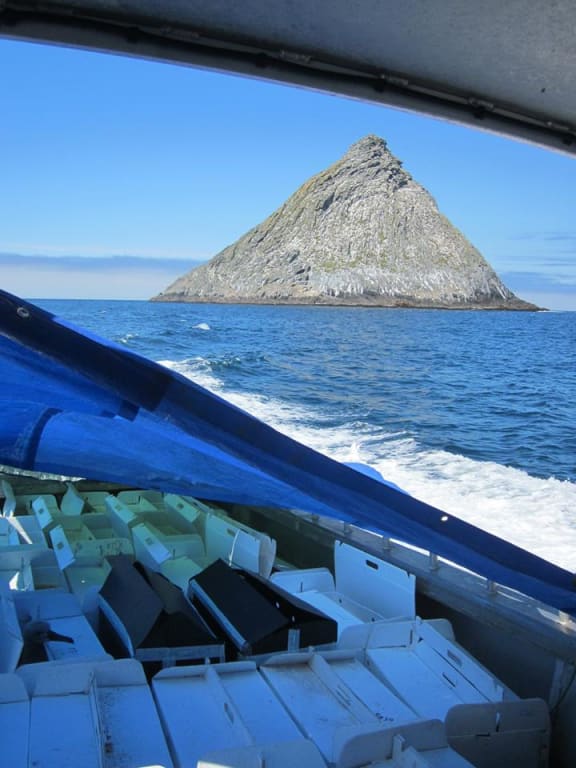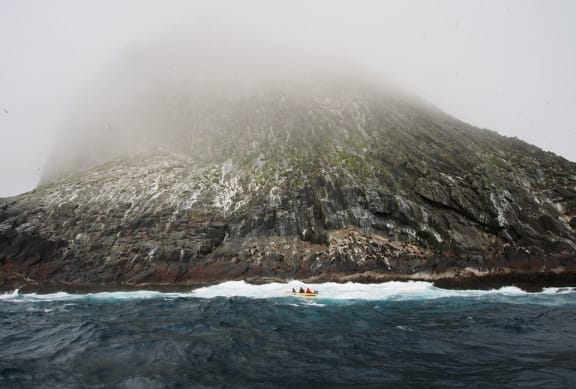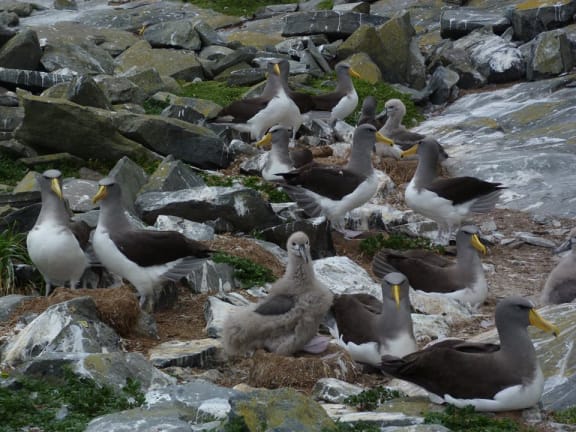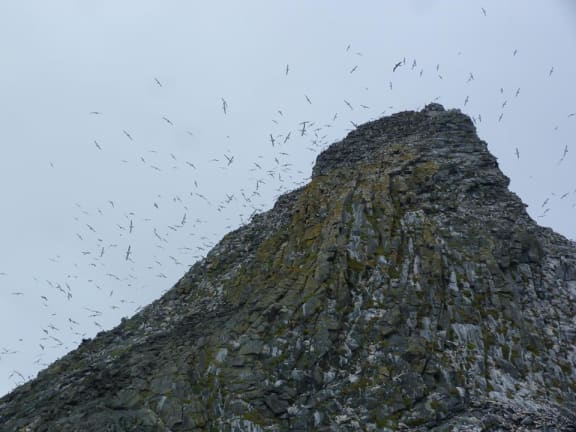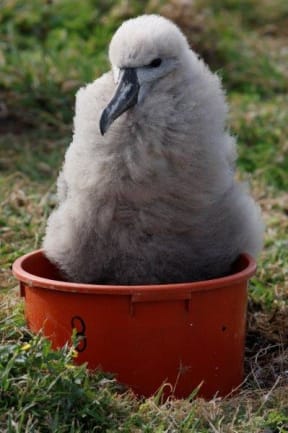
For a Chatham Island albatross chick its nest its castle - and if that nest is a flowerpot, well, the chick doesn't mind. Photo: David Boyle / Chatham Island Taiko Trust
A pioneering seabird project is using flowerpots as nests, to ensure that 50 young Chatham Island albatross chicks feel right at home in their new colony.
“For an albatross chick, its home is its castle – that’s where its parents come back to,” says Mike Bell from the Chatham Island Taiko Trust. “These birds nest on pillar nests, which they make out of mud, and while we couldn’t replicate that we dug plant pots into the ground and filled them with peat. It’s quite natural for them to sit in one spot like that.”
The young Chatham Island albatross chicks have been translocated to the southwest coast of the main Chatham Island, on Liz and Bruce Tuanui’s farm, to establish a new breeding colony of the rare seabird.
“We collect chicks from The Pyramid, which is the sole breeding site of this species,” says Mike. “We collect them about halfway through their growing period, and then feed them daily until they fledge. We’re basically hoping to reprogramme them to think that here is home, and they’ll come back here to breed.”
The decoy adult albatrosses that have been dotted around the translocation site are so realistic that once chicks are old enough to adventure off their ‘flowerpot castle’, they often snuggle up to, and even beg food, from the decoys. The purpose of the decoys is to make the new clifftop site seem like a busy albatross colony, and a speaker system that plays noisy colony sounds adds to that impression.
Chatham Island albatross translocation
While seabird translocations are a common conservation technique, this is only the second time that albatrosses have been moved. The Chatham Island Taiko trust pays tribute to the Japanese team who made the first translocation with short-tailed albatrosses and shared their knowledge with the Chatham Island team.
This is the third year that 50 chicks have been moved, and the plan is to do a further two years.
Mike says that Chatham Island albatrosses don’t begin to return to the colony until they are about 5 years old, and they start to breed when they are 7 years old.
“I’m looking forward to the next couple of years when we might see the first ones starting to come back,” says Mike.
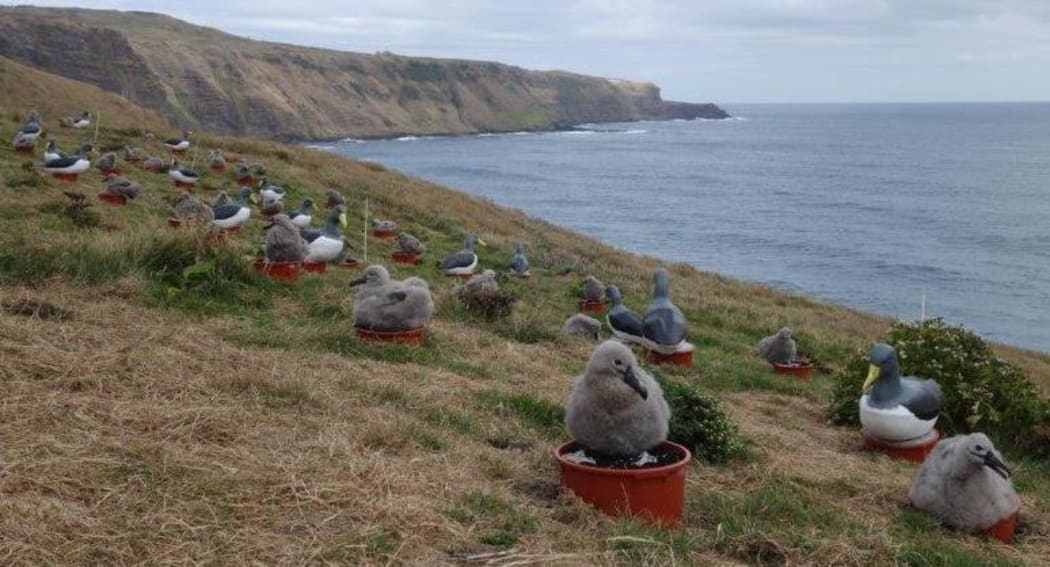
Fifty young Chatham Island albatross chicks sit on their flowerpot nests surrounded by decoy adult birds to give the impression of a busy albatross colony. Photo: Chatham Island Taiko Trust
Our Changing World has previously featured stories about seabird translocations, including fluttering shearwaters to Matiu Somes Island, various seabird species to Mana Island, and Hutton’s shearwater to the Kaikoura Peninsula.
Mike Bell and the Chatham Island Taiko Trust have also been on the show in a 2-part series about the translocation of tui from Rangatira/South East Island to a bush reserve on the main Chatham Island.

